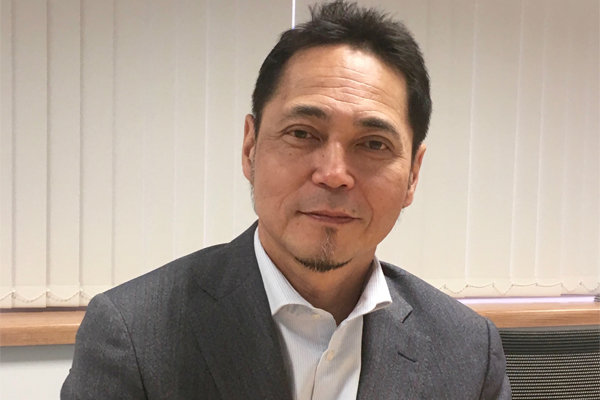It’s less than 18 months since Oki Data Corporation completed the acquisition of Seiko I Infotech, a move that brought it into the large-format digital inkjet arena. So can this sector newbie compete in what is now an established marketplace?
In October 2015, on completion of its acquisition of Seiko I Infotech, OKI Data Corporation president Takao Hiramoto, said: “Through this acquisition, we have not only acquired a portfolio of wide-format inkjet printers but also the corresponding technologies, development resources, and sales channels. By offering one-stop printing solutions targeting the printing, distribution, and retail industry sectors, we will strengthen our printer business in the professional printer market.”
Almost a year and a half later and Oki Data Corporation, the printing business group of Oki Electric Industry, makes up a quarter of the group’s total $4.2bn turnover. What started as a telecoms business in Tokyo in 1881 has certainly diversified, and while the group’s expertise in telecoms/information systems remains strong, printing systems is now one of its top sales sectors, in revenue terms just above the group’s other key division, banking systems, and significantly larger than areas like social infrastructure where it also has a presence.
Oki Europe accounts for 15-20% of that print systems $1bn+ turnover according to its MD Terry Kawashima, who is at pains to point out that the Surrey-based operation - which handles only print systems - deals with the Middle East and Africa as well as Europe. If that turnover surprises you it’s probably got something to do with the fact that ‘printing systems’ include single functional and multifunction devices for office, retail and healthcare markets as well as printers for the professional graphic arts sector. Plus, Oki doesn’t sell direct, so you’re likely to be more familiar with channel partners like Signmaster here in the UK than with Oki itself. And then of course, there’s the fact that it has only been in large-format inkjet for such a short space of time, and revenue from the ColorPainter large-format colour inkjet printer range for instance is still relatively small beer in the scheme of things.
In the financial year ending this month (March 2017) Kawashima expects around 500 ColorPainters to have been sold across his territory. He also expects to see real growth by expanding this range, and from Oki’s other R&D efforts within large-format inkjet over the coming months and years.
“There was a strategic reason why Oki bought Seiko! The office market has been big for the group, but it’s not a growth market so we’ve had to work out where to go next. The professional graphic arts market is of interest because we can see our LED technology has a future there if we have a product portfolio of some seriousness, hence the Seiko acquisition. We see real opportunities to develop models to fill gaps. It is still really quite early days but R&D is happening.”
Asked to flesh out that comment, Kawashima says that within its existing range of printers for the professional graphic arts market, Oki has the LED toner-based Pro 9 Series A3+ five-colour machines for light production environments, and various models of LED toner-based media transfer printers (up to A3+), as well as the former-Seiko TerioStar mono machine and ColorPainter colour offering.
“We want to widen that range for professional print companies,” says Kawashima. “The former Seiko products that came to us are good products, but limited in scope and so we are looking beyond current sizes, technologies and application segments.”
The ColorPainter range, all solvent roll-to-roll machines, currently comprises the relatively new 64in-wide E-64s (that uses SX inks) as well as the M-64s
(also uses SX ink), W-54 and W-64 (that run IX or GX inks), and the H Series (GX ink).
So what’s next? “Up to October 2016 Seiko R&D had been kept separate from the rest of Oki R&D in Japan, but since then everyone has been working together and we’re looking at bringing to market printers that will serve different applications in print,” explains Kawashima.
Actually, even back at Drupa 2016, Oki provided an early technical demo of one of the areas under development - a system that pre-coats media and prints all on the same unit. At the time of going to press there were still ongoing discussions over whether it would be shown at the upcoming Fespa 2017.
Kawashima is keeping tight lipped about other specific developments and release dates as you might expect, but he confirms that Oki is looking at flatbed technology “that would clearly open up new markets to us in the next two or three years”. Asked if perhaps entry into this sector at such a late stage in the game might be somewhat problematic, he admits that “Middle Eastern markets might be more interesting to us than Europe.”
Where European gains are more likely to be won to his mind is within the textile digital print sector. “Our R&D people are looking into possibilities, and in terms of the graphic arts roadmap, this is what we see as most important to get to market,” he acknowledges.


